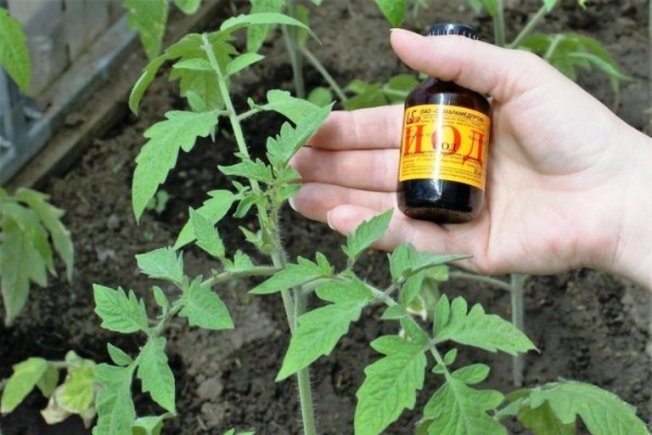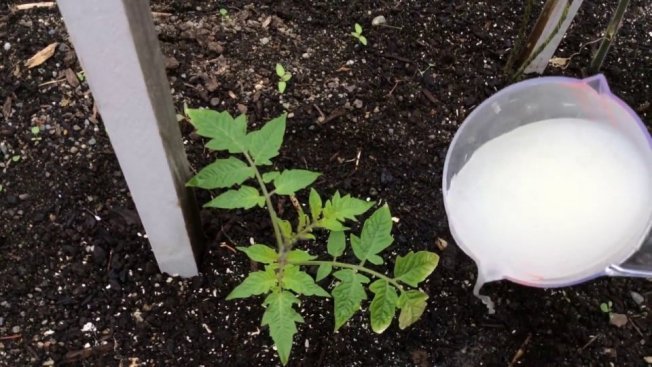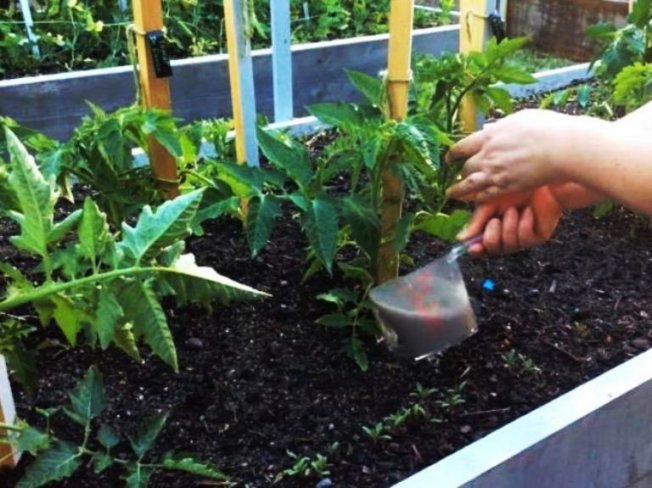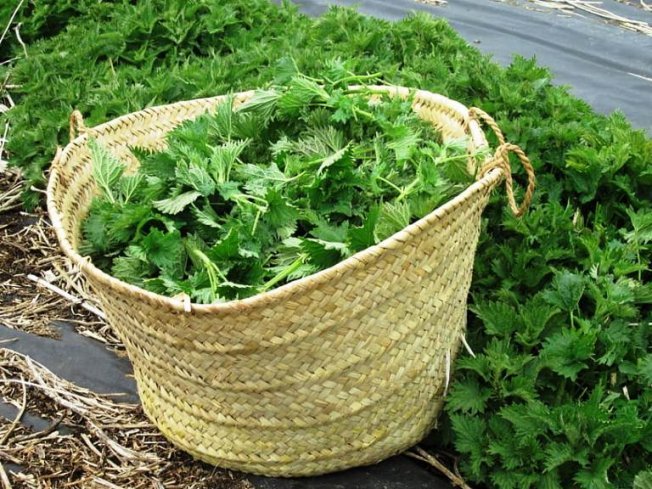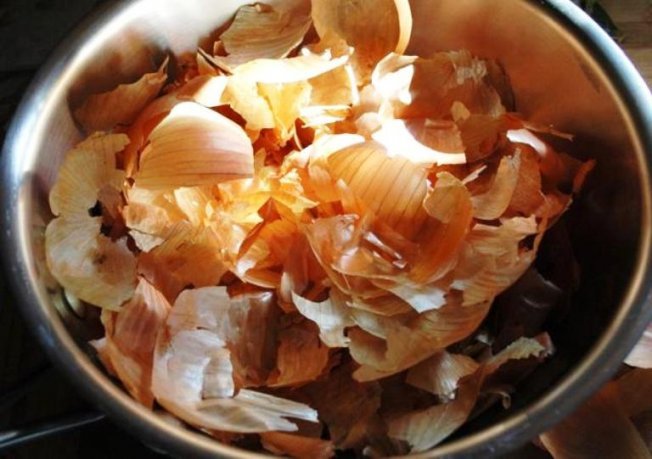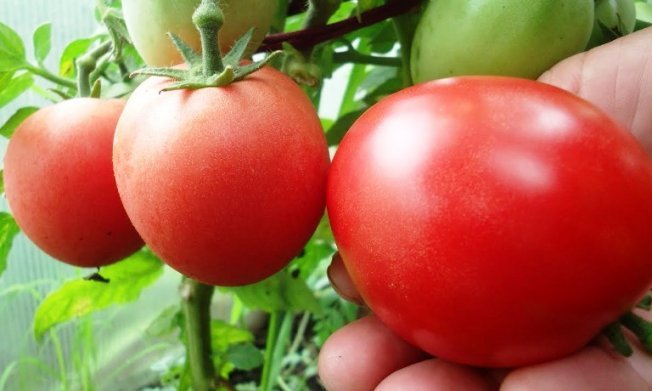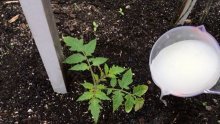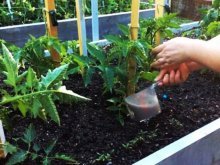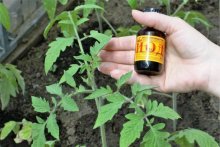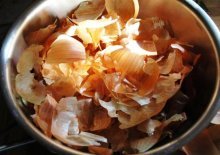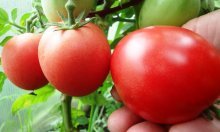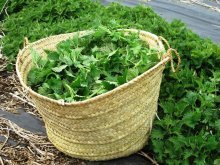Feeding tomatoes after planting in open ground using folk remedies

The application of additional fertilizers during the growth and fruiting of vegetable crops is an important point that gardeners should not forget about. For those who do not want to use chemicals on the plot, it makes sense to study in detail how tomatoes are fed after planting in open ground using folk remedies. Properly applied natural fertilizers will accelerate the development of plants and improve their fruiting.
Content:
- When and how to fertilize tomatoes
- Feeding tomatoes with milk with iodine and boric acid
- Infusion and solution of ash for fertilizing tomatoes
- Chicken droppings
- Mullein
- Nettle, dandelion and alfalfa, other plant materials for preparing fertilizers
- Feeding tomatoes after planting in open ground with yeast
- Compost
- Onion peel
- Useful information about the peculiarities of feeding tomatoes
When and how to fertilize tomatoes
It is not so important what kind of fertilizers you use in the beds, the main thing is to observe the timing of their application and control the balance. We must not forget that oversaturation of the soil with useful substances will not only not be beneficial, but will also be harmful.
For the first feeding, it is recommended to use herbal infusions or aqueous solutions of minerals. Infusions and solutions of nutrients are applied under the bushes, always after watering.
During flowering, you can add an infusion of mullein or bird droppings.A positive result can be obtained by adding a small amount of potassium sulfate to the solution. Before applying, the solution is diluted with water; the proportions must be observed! Too high a solution concentration can cause root burns.
In the absence of organic fertilizers, mineral fertilizers can be used; nitrophoska is especially effective. Copper sulfate and potassium permanganate can be added to the liquid fertilizer, but again, strictly observing the dosage.
When the ovaries are already formed, you can feed the plants with boric acid and an infusion of wood ash. An increase in fruiting will be facilitated by the addition of a solution of a mixture of sodium humate and superphosphate.
To increase the fertility of the soil, it can be enriched with peat and manure.
When planning fertilizing, we must not forget that it should be carried out no more often than every 2 weeks. The first is produced no earlier than 14-15 days after planting the seedlings in a greenhouse or under the open sky. Stop fertilizing in mid-July.
Feeding tomatoes with milk with iodine and boric acid
This composition is used for cucumbers, tomatoes, peppers. It will increase productivity, because will help increase the number of ovaries.
We prepare the following composition:
- 10 liters of water;
- a glass (250 ml) of natural cow's milk;
- 60 drops of iodine;
- half a teaspoon of boric acid;
- 50 ml of humate solution;
- crystal of potassium permanganate.
This product will have a complex effect on plants:
- boron will increase the number of inflorescences and extend the flowering period;
- potassium permanganate and iodine - will have an antiseptic effect and prevent the possibility of developing fungal infections;
- Potassium permanganate, in addition, is a source of an element valuable for plants - potassium.
The technology for preparing fertilizer is not complicated:
- First we dilute milk with iodine;
- dissolve the magenta in heated water until the crystals disappear, add it to a bucket of water, the solution should have a pale pink tint;
- dilute boric acid in hot (more than + 50 C) water;
- dissolve the humate as indicated in the instructions and take 50 ml;
- Mix all prepared ingredients thoroughly in a bucket of water.
Treatment of plants should be carried out early in the morning or after sunset, otherwise you can cause burns on the leaves. The frequency of processing tomatoes with this composition is up to 3 times.
Milk and iodine for feeding tomatoes can be used as part of other products. For example, to ripen the ovaries, take 4 drops of iodine per 10 liters of water, add the resulting solution to the bushes, 2 liters of liquid for each.
Let's watch a useful video and learn another secret of effective feeding of tomatoes:
Infusion and solution of ash for fertilizing tomatoes
To prepare an ash solution, take 1 cup of ash per 10 liters of water. After thorough mixing, water the beds with the product. If there is any undissolved ash left, it can be applied under the bushes.
For foliar feeding, you will need to stir 300 g of ash in 3 liters of water. Then boil the mixture for 30 minutes. Next, the product is left to infuse for 5-6 hours. After filtering, the broth is diluted with water to make a 10 liter bucket. Adding a small amount of laundry soap will improve the adhesion of the product to the sheets. The strained solution is applied to the leaves.
Chicken droppings
Feeding tomatoes after planting in open ground with chicken manure gives an effect no less pronounced than that obtained as a result of exposure to mineral complexes.After all, chicken droppings contain large amounts of nitrogen and phosphorus.
The litter is used fresh and dried. Fresh is diluted as follows:
The bucket is filled one third with droppings, water is added to the top, and left to infuse open for a week. To apply 0.5 liters of infusion to 10 liters of water under the bushes, the resulting liquid is applied to the beds at the rate of 5 liters per 1 square meter.
Do not allow the solution to come into contact with plant leaves: such a composition can cause burns.
When using dry chicken manure, 0.5 kg is poured with 10 liters of water, tightly closed and kept for 4-5 days. To activate the processes, it is recommended to stir the mixture daily. Next, the infusion is diluted with water in a ratio of 1 to 20. You can add 0.5 - 1 liter of the nutrient mixture under the bush.
Let's watch a useful video about folk remedies for feeding tomatoes:
Mullein
Feeding tomatoes with mullein can be done in alternation with other means. To prepare the nutrient composition, take buckets of manure, add water to the full capacity, cover with a lid, and leave for at least a week. The infusion is mixed, diluted 1 part to 10 parts water. Apply 0.5 liters under the bushes.
Nettle, dandelion and alfalfa, other plant materials for preparing fertilizers
Nettle leaves are rich in iron, nitrogen, potassium; young shoots and leaves make excellent fertilizer for tomatoes and peppers. It’s not difficult to prepare: a container filled 2/3 with nettles (or chopped leaves and stems of other plants) is filled to the top with water and covered with a lid. Infuse in a well-heated place for 7-10 days.
When the fermentation process begins, take 1 liter of infusion and dilute it in 10 liters of water.After watering, the infusion in an amount of 1-1.5 liters is poured under the tomato bushes. You should not overuse this type of feeding; 1 or 2 applications per month are acceptable.
Instead of nettles, you can use freshly cut alfalfa grass or dandelions.
If you're a banana lover, don't throw away the skins! They can also serve as raw materials for the preparation of valuable fertilizer. The peels of 2-3 bananas are placed in a 3-liter jar and filled with hot water. Infuse for 3 days, then remove the peel and water the plants with the infusion. This fertilizer is useful not only for vegetable crops, it has a beneficial effect on decorative indoor plants.
At the seedling stage, tomatoes can be topped with an infusion of crushed eggshells. The shell of 1 egg should be soaked in 3 liters of boiling water. About. that the solution is ready is indicated by its cloudiness and increased smell, which means it’s time to water the seedlings with it.
Feeding tomatoes after planting in open ground with yeast
Fertilizer prepared with yeast contains substances that can stimulate the development of tomato roots. Apply yeast mash two weeks after planting seedlings in the ground. It is dangerous to use such a solution if the soil contains little organic matter: the fungi contained in the yeast must find food in the soil. The purpose of yeast fertilizer is to activate the process of decomposition of plant residues and enrich the soil with easily digestible forms of nitrogen and potassium phosphorus. The absorption of these substances by tomatoes helps accelerate plant development.
To prepare yeast nutrition you will need:
- 3 liter jar;
- 1.5 liters of heated water;
- 10 g fresh yeast;
- 50 g sugar.
Yeast is ground with sugar.pour warm water and leave until fermentation begins. When the foam settles on the composition (usually after a couple of days), the jar is topped up with warm water. 1 liter of mash, diluted in 9 liters of water, 1/2 liter added to each plant.
Compost
This is one of the most useful fertilizers, suitable for application to the top layer of soil; it helps increase productivity and serves as a prevention of diseases that affect the growth and development of bushes.
Onion peel
Feeding is inexpensive, since a large amount of onion peelings can be collected throughout the winter. When preparing, you should follow the proportion: for 1 glass of dry raw materials you will need a liter of hot water.
You should insist throughout the day. You can apply the infusion like other fertilizers - by watering the plants. But if the bushes are affected by thrips, aphids, or spider mites, the product can be sprayed on the leaves. To make the solution sticky, add a little dissolved laundry soap to it.
Watering plants with infusion of onion peels is an excellent prevention of gray and black rot of fruits.
The infusion is also used for watering tomato seedlings, and watering can be done every three days.
Useful information about the peculiarities of feeding tomatoes
The most important component of all types of balanced fertilizers is nitrogen, but tomato is not one of the crops that have an increased need for it. Adding an excess amount of nitrogen will lead to a decrease in the number of ovaries on the plant, but will activate the growth of green mass.
The positive effect of the phosphorus component in fertilizers for tomatoes cannot be underestimated - when a sufficient amount of this element is added, the fruits significantly increase in size, ripen faster, and acquire a brighter color. The plants themselves acquire increased resistance to diseases.
Potassium promotes the active growth of tomatoes and has a beneficial effect on the process of photosynthesis. With a lack of potassium, plants weaken, fruits become smaller, and the risk of disease spread increases.
We cannot ignore the fact that for the normal development and fruiting of tomatoes the following are also important:
iron and zinc;
manganese and magnesium;
copper and molybdenum.
Although these substances improve the quality of the crop and help maintain the health of the bushes, they are not required as much as nitrogen, potassium and phosphorus.
Agronomists recommend applying fertilizers, which are gradually used by plants, not as fertilizers, but by incorporating them into the soil when planting seedlings or sowing seeds.
Liquid fertilizers are considered more effective; tomato bushes can absorb them not only through the root system, but also through the leaves.
The use of organic fertilizers is becoming increasingly popular, because they do not contain chemicals harmful to the human body. To obtain organic fertilizers, biodegradable compounds are used, such as compost and grass clippings, and waste from agricultural production.

